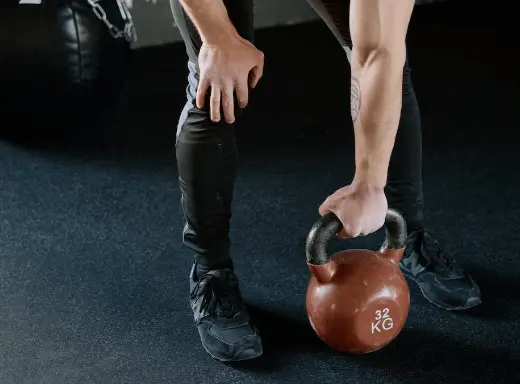Just like dumbbells, these are exercise instruments everybody has most definitely heard of and used. A kettlebell is an iron ball with a handle on top.
It has been practically seen that the kettlebell has more than 25 grips that can be used to challenge different sets of muscles, increasing the difficulty and complexity of the workouts. A few of the grips are as follows: Rack grips, pressing grips, ballistic grips, and the lifting grip to name a few.
These differ from dumbbells in the sense that their center of mass is extended beyond the hands thus facilitating ballistic and swinging movements. Kettlebells generally help build strength and endurance, especially in the legs, the deltoids, and the lower back also increase the grip strength of the forearms.
There are multiple ways to use a kettlebell, single-handed kettlebell exercises, or double-handed kettlebell exercises.
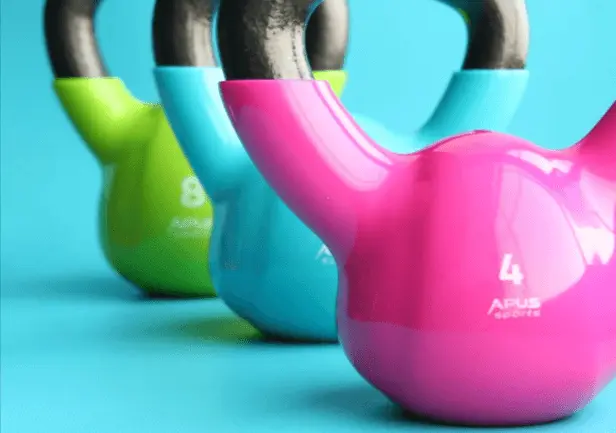
A sport related to the equipment was popularized in Russia which is not gaining popularity worldwide.
Here’s how kettlebells differ from dumbbells:
- Dumbbells are preferred by beginners as the exercises performed by dumbbells are more stationary thus decreasing the risk of an injury which can not be said for a kettlebell.
- Kettlebells are expensive as compared to dumbbells.
- Holding a kettlebell is harder than holding a dumbbell.
- Kettlebells provide unilateral training, unlike dumbbells.
Here are the advantages of a kettlebell
- The swinging motion that is seen by using a kettlebell helps train multiple muscle groups.
- These have proven to provide better cardio as they require more movement, unlike the dumbbells which have more static exercises.
- Kettlebells have proven to improve functional strength or also known as the strength used in day-to-day activity.
- It has been shown to lower discomfort in the back as it creates a fluid movement.
- It is also easy to learn the proper technique required for the exercise.
- A useful tool for weight loss.
Disadvantages of using a kettlebell
- These are hard to use for beginners as they require the person to possess at least a certain amount of strength.
- It can easily cause injury.
Using a kettlebell on specific muscle sets:
The core
Who doesn’t desire a six-pack as obvious as it sounds to achieve this it is really important to target all the muscles of the abdomen making sure you are strengthening all the core muscles as well as toning them up.
The kettlebell swings
The most standard exercise is with a kettlebell and is probably one of the first exercises one will learn, these also help train your posterior muscles like the glutes, and the spinal muscles.
- Stand with your feet apart at hips width.
- Hold a kettlebell in your hands.
- Bend with your palms facing your body making sure your upper body is parallel to the floor.
- Swing the kettlebell forward with the movement of your hips.
- Swing back down.
- Repeat.
Try avoiding swinging the kettlebell over your shoulders.
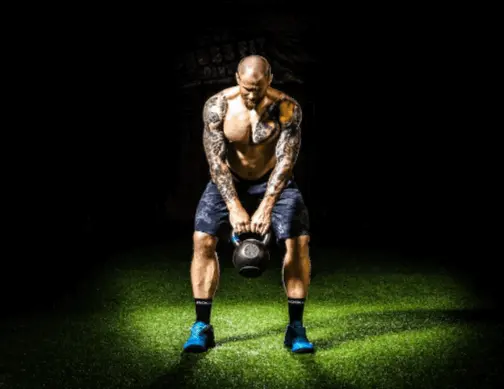
The kettlebell Russian twists
These greatly target the obliques and the ab muscles.
- Lay down on the floor and bend your knees.
- Create a V shape using your upper body in relation to your legs.
- Turn your body to the sides as your embrace your core while holding a kettlebell in your hands.
- Hold and repeat on each side.
This exercise greatly carves the muscles of the core.
Kettlebell situps
Not only is this exercise good for your abs but also for your calves your hips and your back.
- Lay down on the floor as you hold a kettlebell in your hands.
- Bend your legs and firmly stick your feet to the ground avoiding you from moving your lower body during the exercise.
- Curl your body into the sitting position.
- Raise or press the kettlebell over your head maintaining your core.
- Lower the weights and go back to the floor.
- Repeat.
Kettlebell windmill
- Place the left leg in front.
- Hold a kettlebell in your right hand and raise it over the head.
- Place the palm of your left hand close to the left leg.
- Keep your spine straight.
- Lower your upper body as your left-hand moves over your leg downwards (pushing your glutes back) while you turn your head up to look at the kettlebell.
- Continue this until you can no longer go down without bending your spine and now slowly go back up.
The arms
Kettlebell overhead press
- Stand straight with feet spaced apart.
- Hold the kettlebell in one hand at the chin level.
- Slowly raise the hand lifting the kettlebell into an overhead position.
- Keep the other hand horizontal to your chest to maintain balance.
- Lower the weight back and repeat.
Kettlebell normal row
This exercise is very similar to the one performed using a dumbbell.
- Stand with your spine straight.
- Bend at your knees and also at your hips.
- Lift the weight with one hand.
- Pull the kettlebell towards your hips making sure your elbows are close to your body.
- Repeat on the other side.
The back
Double-handed kettlebell swings
- Stand straight with your spine erect.
- Bend down as you reach for the kettlebell on the floor still maintaining a straight spine.
- Engage the hamstrings the glutes and the core.
- Pull the kettlebell backward between your thighs and with the help of your hamstrings and glutes create momentum and raise the kettlebell up in a swinging motion up to the chest.
- Go back down letting the kettlebell pass backward from between the thighs and absorbing the energy from it to swing it again.
Single arm kettlebell row
It is a very similar exercise to the dumbbell row and also has the same motion as it but the weight distribution is different. Here’s how you perform the one-arm kettlebell row with a perfect form.
- Stand straight with your right leg in front.
- Bend at your hips and place the right arm above your knee.
- Lift the kettlebell with the support of your shoulder blade towards your chest.
- Lower it back town.
- Repeat.
It is an intermediate exercise. Not only does it train the back but it also trains the arms.
The legs
Here is a multitude of options for working your lower body using a kettlebell and doing variations in common exercises like squats, lunges, and deadlifts.
Kettlebell deadlifts
These can be done using a single hand or using both hands. It is a very good hamstring exercise and it will also challenge your core.
- Stand straight as you hold a kettlebell in your hand.
- Bend down at your hips.
- As you bend down stretch the leg of the same side backward making sure both the leg and your upper body are in a plane and parallel to the floor.
- Raise the kettlebell as your come back to the normal position.
Goblet squats
This also helps engage the glutes and the hamstrings. A kettlebell is usually preferred when it comes to goblet squats.
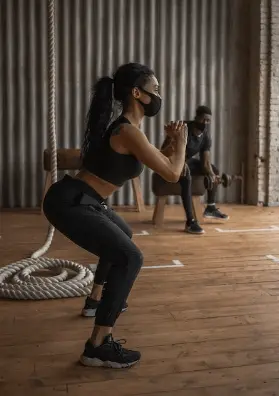
- Stand with your feet wide apart and your toes angled outwards.
- Hold one kettlebell with both your hands at the level of the chest.
- Brace your core and bend your elbows.
- Get into a squatting stance while you keep the kettlebell close to your chest.
- Hold, Exhale as your push with your calves and hamstrings to come back to the starting position.
Bulgarian split squats
These are amazing unilateral exercises for the glutes, hamstrings, and calves. They also help improve coordination and balance.
- Stand facing away from a bench or a chair.
- Hold a kettlebell in both your hands at the height of your chest.
- Brace your core.
- Place the leg back on the chair with only the toes touching it.
- Focus and stay balanced.
- lower your body until your knees are bent making a right angle.
- Push up with the help of your glutes.
- Repeat on the other side.
Sumo squat
Sumo stance-based variation of compound lifts. This exercise has been found to engage your glutes.
- Stand straight with your feet wider than your hips and rotated outwards.
- Hold the kettlebell between your legs by your hips.
- Get into a squatting position while you embrace your core and maintain your spine in a neutral position.
- Raise back to the starting position with the help of your feet.
You can also perform multiple other tasks using a kettlebell like the high pull which is a variation of the swing requiring you to swing the kettlebell higher than usual. The floor press, a pistol squat, lunges, halo deck squat, or the Turkish get-ups, are all other really useful exercises that can definitely be performed along with or instead of the exercises already discussed above.
Conclusion
Exercising and undeterred determination with the right diet and an exercise routine that you make for yourself is the only way to achieve your health goal, fitness goal, or whatever other goals it may be when it comes to fitness.
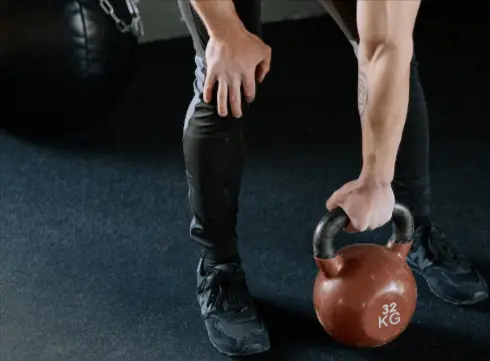
If your gym has a kettlebell then well and good but there are sure more cons than pros when it comes to kettlebells. they can be really dangerous for those who have any kind of back and shoulder problems, or a very weak core when performed without proper education.
However, if it is done properly, kettlebells are very beneficial to your health. They can offer an increase in mobility, an increased range of motion, high agility, cardiovascular endurance, mental toughness, and great amounts of strength.
